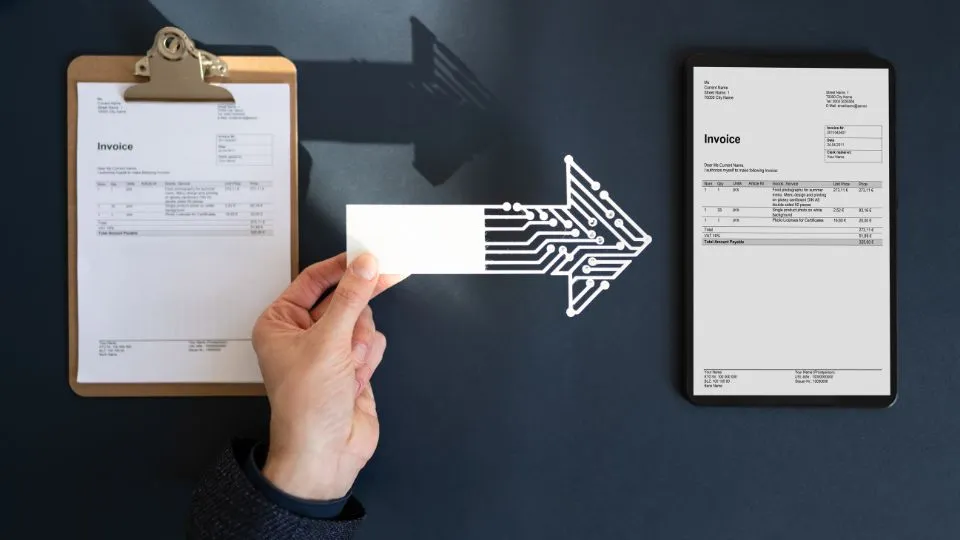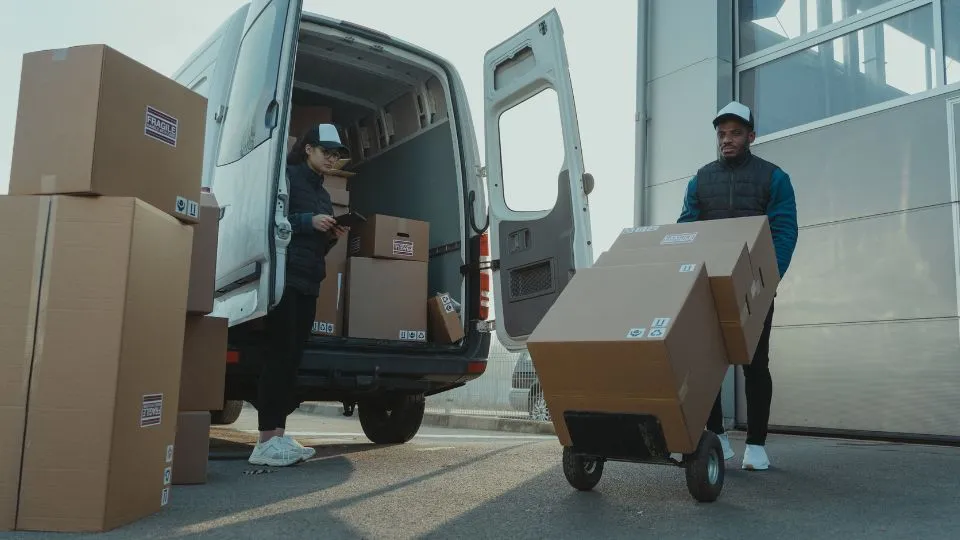Have you ever had a shipment that’s too big for air freight but too small to fill an entire container?
Sound familiar?
That’s where Less-than-Container Load (LCL) shipment comes into play.
LCL shipping is the ideal solution for handling small quantities of goods.
It lets you share space in a container with other shipments, so you only pay for the space you use.
In this article, we’ll explore different aspects of LCL shipments, from understanding its costs and benefits to exploring best practices.
Let’s get started.
What is LCL Shipment?

LCL, or Less-than-Container Load, refers to shipments that don’t require a full container. Instead of booking an entire container, companies can share space with other shipments heading to the same destination.
LCL shipments offer a cost-effective, convenient solution for transporting smaller quantities of goods. At the origin port, goods from different shippers are consolidated into one container, then unloaded and distributed separately at the destination port.
Now, the question arises: How would you know if LCL is your best solution? Let’s find out.
When to Consider LCL Shipments?
Here are some scenarios where you can consider LCL shipments:
1. Small Shipment Volume
If your shipment’s volume is too small to fill an entire container, you can choose LCL to share space with other cargo. This will save you from paying for unused container space.
2. Cost Efficiency
When you have a limited budget, LCL becomes an affordable option.
Nobody wants to spend extra money booking an FCL when the shipments are not large enough to fill an entire container. In this case, LCL shipments become the best choice.
3. Irregular Shipments
LCL is ideal for inconsistent shipping schedules or varying shipment sizes. Instead of waiting to fill an entire container, you can send small quantities whenever needed.
It allows you to adjust shipping frequency without committing to a full container. LCL best suits businesses managing seasonal demand or exploring new markets.
4. Diversified or Mixed Cargo
Different types of cargo are consolidated into a single container for LCL shipping. This allows you to ship mixed goods or a variety of products together to the same destination with ease.
5. Non-urgent Shipments
LCL shipments usually have longer transit times due to extra handling and consolidation processes. If your shipment is not time-sensitive, LCL can be a more practical solution. It is an ideal choice if you want to save on shipping costs when delivery speed isn’t a primary concern.
Now let’s understand how your goods make their journey from the warehouse to their destination.
How LCL Shipment Works?

Have you ever wondered how your cargo becomes a part of an LCL shipment?
Through the whole process starting from the receipt of a cargo in the warehouse and up to its delivery, all the actions are observed, recorded, and controlled.
This journey is not random: each phase builds on another, and they are synchronized to enhance the efficiency of their implementation.
Let’s examine this process in more detail step by step.
1. Planning and Packaging
The planning phase is the most crucial and basic stage of all LCL shipments. The shipment requires packaging with the highest level of care and safety to guarantee safety during delivery.
Always remember to consider these key components while choosing LCL shipments:
- Perform cargo check. Collect all information about the cargo, including the dimensions, the weight, the volume, and any other handling requirements before the shipment is made.
- It may take 1-2 days to prepare all the documents necessary for the consignee’s confirmation of cargo booking. Discuss pick-up times and or any specific desired delivery time. Do not forget to suggest five to seven buffer days to the delivery dates in case of possible delay.
- Then, compare possible routes and probable carriers in connection with the duration of the transit and its costs.
- Always make sure you have important documents such as commercial invoices and include the product descriptions, HS codes, and values. At times, you may also need other documents like FDA registration for food shipments.
- Be sure that the package is properly marked and contains necessary information such as the company name, the purchase order number, and handling instructions.
2. LCL Consolidation Process

A smooth consolidation process is essential for reducing transit time and protecting your goods.
When preparing an LCL shipment, a final inspection checks each item for quality and accuracy before it reaches the warehouse.
Here, shipments are combined or “consolidated” with others going to the same destination, allowing smaller loads to share space and cost in one container.
Every detail is double-checked against documentation to avoid hold-ups at customs.
Consolidators then plan the container layout carefully, ensuring maximum space use while keeping everything secure for transit.
3. Deconsolidation and Distribution
When the cargo reaches the destination facility, the cargo seal is verified. Each item is checked for any signs of damage that may be noticed before unloading.
To avoid any form of delay or hold up the customs clearance documents are always prepared in advance.
Once cleared by the customs officials, shipments are scheduled for final delivery and coordinated with last-mile partners.
Ensure that you get a receipt or any sort of documentation that shows that your cargo has reached your intended destination safely.
The total timeline from departure to final delivery of the shipment is usually around 30 days. This timeline varies depending on the route and customs clearance process.
It is always important that all stakeholders have full information and updates concerning the location and status of LCL shipments.
Next, let’s explore how LCL shipping costs are calculated.
Understanding LCL Shipment Costs

How much will an LCL shipment cost me? That’s the first question that pops up in your mind after learning the advantages of LCL shipments.
Let’s examine various key components that influence LCL shipment costs.
1. LCL Shipping Rates
Carriers calculate LCL rates in two primary ways and charge you for whichever costs more.
| Type of Rate | Calculation Basis | Ideal for |
| Volume-based rate | Per CBM or Cubic Meter | Large but lightweight items |
| Weight-based rate | Per Ton | Dense and heavy materials |
Every shipping company has set minimum charges on the shipments that you must pay, irrespective of their volume, weight, or size.
- Minimum volume: Usually 1 CBM
- Minimum weight: Typically 1 ton
- Minimum cost: Each shipping route has a minimum price that varies by trade lane.
2. Additional LCL Shipment Charges
The standard rates are Basic Ocean Freight (BAS), Origin Terminal Handling Charges(THC), destination THC, and basic documentation rates.
The shipment costs also include other charges such as local pickup and delivery charges, Customs Clearance costs, cargo insurance, special handling, and peak season surcharges.
3. How to Calculate LCL Shipment Costs?
Let’s walk you through the steps for calculating LCL shipment costs:
Step 1: Calculate Your Chargeable Volume/Weight
First, determine whether you are charged by volume or by weight.
- Volume based rate (CBM) = Length × Width × Height (in meters)
- Weight-based rate (metric tons) = Actual weight in kilograms ÷ 1,000
Step 2: Apply Basic Ocean Freight Rate
Step 3: Add Origin Charges
Standard Origin charges include Origin THC, documentation fees, export customs clearance fees, and pickup and delivery charges to the Container Freight Station(CFS).
Step 4: Include Destination Charges
The total destination charge is calculated by adding THC destination, documentation fees, import Customs clearance, and delivery charges from CFS.
Step 5: Factor in Additional Fees
Common additional charges including Fuel Surcharge (BAF), security fee, and peak season surcharge are added to calculate total additional fees.
Step 6: Calculate Total Cost
| Total shipment cost = Basic ocean freight charge + Origin Charges + Destination Charges + Additional Fees |
Let’s break down these charges with an example of a cargo moving from Shangai to LA.
- The basic rate is $60 per CBM. Basic ocean freight charge: 2 × $60 = $120
- Total Origin Charges is $265.
- Total Destination Charges: $330
- Total Additional Fees: $47
So the total LCL shipment costs add up to $762.
These costs might seem complex but once you make it a regular practice, you can easily manage your shipping costs.
Ship better and save more.
Now that we have learned all about LCL shipments, let’s sum up with key takeaways to help you move forward.
Key Takeaways
For various start-up companies, LCL shipment is often the smartest choice. They usually operate with limited budgets and unpredictable shipping volumes. This makes LCL a cost-effective and flexible solution for small businesses.
You don’t need an entire container for shipping your goods across the globe. All you need is your cargo, destination location, and a reliable partner to take you through this journey.
Using LCL shipments, you can optimize your shipping costs while maintaining a healthy cash flow for your business.
If you are wondering where to start or how to use LCL for your business. Just follow these simple steps:
- First, review your current shipping volume.
- Then calculate your budget and savings.
- Test small goods in a new market using LCL shipments and then gradually scale up as your business grows.
Ready to see how LCL shipping can benefit your business? SeaRates ERP provides you with flexible and cost-effective solutions for your shipping needs. Book a free demo today to learn more. |
Frequently Asked Questions
1. What is the difference between FCL and LCL?
The Key differences between FCL and LCL are mentioned below:
- In FCL, one shipper uses an entire container whereas, for LCL, multiple shippers can share container space.
- FCL allows faster transit times and lower per-cubic-meter costs. On the other hand, LCL is more economical for small shipments as it offers higher flexibility.
- In FCL, direct delivery is possible, whereas in LCL, the shipment requires consolidation/deconsolidation before delivery.
2. How long does LCL shipping take?
Transit times for LCL typically include:
- Standard ocean transit time plus 5-10 extra days for consolidation/deconsolidation
- Common routes like Asia to the US West Coast take 21-35 days. On the other hand, routes from Asia to US East Coast take 35-45 days and Europe to the US takes 18-25 days.
- Additional factors such as customs clearance, and inland transportation also affect the transit time.
3. When should I use LCL shipment?
LCL shipping is best when:
- Shipment volume is between 1-15 cubic meters
- You’re not under urgent time constraints
- You want to reduce inventory holding costs
- For testing new markets or products
- Managing seasonal inventory
- Working with small order quantities
Let's Talk
About Author
Gaurav Lashkari
Product Manager
Gaurav Lashkari is the Product Manager at INTECH, experience in Logistics, Supply chain, Ports and Terminal domain with played a different role in this area. Gaurav excels at driving innovative solutions for supply chain and logistics challenges. He combines a deep understanding of logistics processes—such as freight management, warehousing, and transportation—with expertise in modern technologies. With a problem-solving mindset and a knack for stakeholder engagement, he is playing a pivotal role in shaping scalable, cost-efficient, and globally adaptable logistics solutions.









